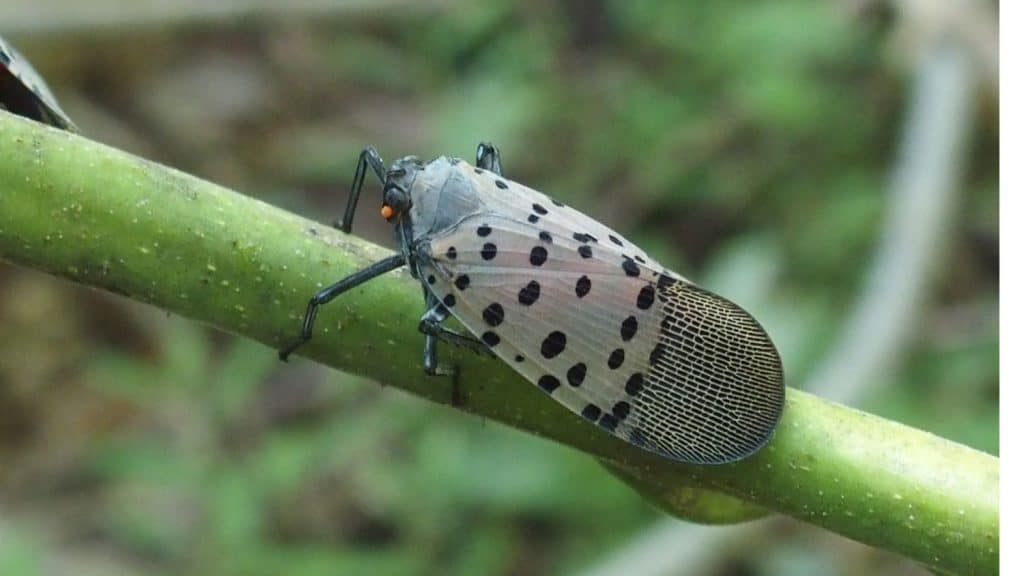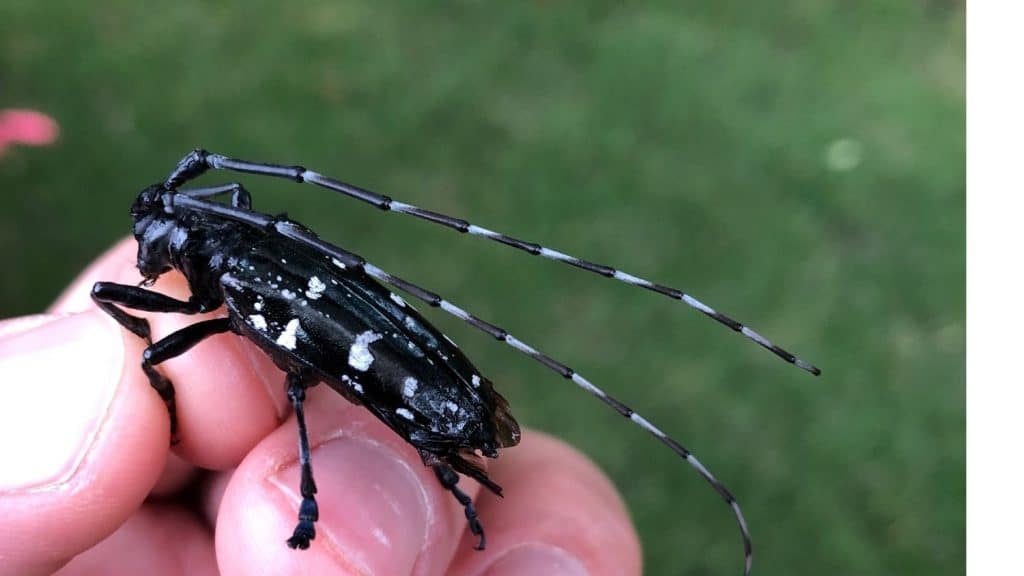Forestry Experts Want You To Watch Out for ‘Poolside Pests’

If you’re planning to try to relax poolside this summer, forestry researchers from NC State want you to nap with one eye open.
Along with experts from the N.C. Department of Agriculture & Consumer Services Plant Industry Division and the N.C. Forest Service, NC State researchers are looking for reports of two vigilante insects that might have crossed state lines into North Carolina. Since they are attracted to water, they could end up in pools or pool filters. They pose a threat to defenseless forests and certain crops.
“People from other states have posted photos of these pests in their coffee cups or in their dogs’ water bowls,” said Kelly Oten, NC State assistant professor and extension specialist in forest health. “They’ve been recovered from pool filters as well.”
The insects are the Asian longhorned beetle, which has been discovered in South Carolina and can be deadly to hardwood trees, and the spotted lanternfly, which has been spotted in Virginia and poses a threat to grapes, fruit and certain trees. These insects are not native to the U.S., and researchers want you to report them if you see them so they can control their spread. The Abstract spoke to Oten about the risks these pests pose to forests and agriculture in North Carolina, and how to report the pests.
TA: Why are you trying to track these insects?
Oten: We are at this weird crossroad where we have one of these pests in each of the states to the north and south of us. They could very easily be here and we just don’t know it yet. With any invasive pest, the quicker you find it, the better your chances are of eradicating it. If it is found, there are agencies ready to respond immediately.
TA: What are the risks of the spread of Asian longhorned beetle and the spotted lanternfly in North Carolina?
Oten: The spotted lanternfly, which was originally found in Pennsylvania, has spread into surrounding states including south to Virginia. It’s an agricultural pest that feeds on grapevines, hops and fruit trees. It attacks many other species of trees found in North Carolina too, but doesn’t usually kill them. It can weaken and predispose them to other diseases, though. It’s also a huge nuisance pest. No one will like it if the spotted lanternfly gets here!

The Asian longhorned beetle attacks many species of hardwoods, but its favorite tree is the red maple, which is the second most common tree in North Carolina’s forests. This one can kill trees. The larvae feed on the internal parts of the tree, and the tree loses structural integrity. Branches start breaking off. The trees just start falling apart. It can be very devastating.
The beetle was first found in the mid-1990s in Brooklyn and has been found sporadically in the Midwest and Northeast. Last year, it was found just outside of Charleston, South Carolina, the first time it was found in the South. After doing some studies, researchers found it’s been there for at least eight years. People were like, “I saw this last year at the pool.” That’s why we’re targeting pool owners; we’re hoping to work with people who do pool maintenance, so if they do see either one of these, they can report it.

TA: What new methods are you studying for controlling the Asian longhorned beetle?
Oten: With Asian longhorned beetle, the goal is to eliminate the population every time it’s found or detected in a new area. The good news is that the USDA Animal Health and Plant Inspection Service (APHIS) has been able to eradicate this beetle multiple times already. Until the find in South Carolina, all of the infestations have been managed or eradicated by cutting and chipping the trees they are found in.
Our research is trying to solve some management problems in the South. It’s very swampy in areas where it was found in South Carolina; you can’t get large equipment into these swamps to cut and chip trees. But you can get hand crews or people out there. Our research is looking at different ways to kill the trees and the beetle, without getting heavy equipment in.
TA: How did these insects get here, and is there anything we can do to control their spread?
Oten: We are pretty sure they came over in wood packing material, but we don’t know the exact source. Think of pallets and crates – the wood materials that hold shipments in place. Insects that bore into wood like the Asian longhorned beetle can easily hide in those. The spotted lanternfly lays its egg mass on things that are often moved around as well.
One way many invasive species spread in the United States once they get here is in or on firewood. To try to control the spread, many groups have launched awareness campaigns, such as the Nature Conservancy’s Don’t Move Firewood campaign. It makes sense if you think about it – if someone’s tree is dying in their backyard, they might cut it down and chop it up. They might have no idea it’s infested, and go camping weeks later, bringing their firewood and the hidden pest with them to a new area. In one day, an invasive pest can be moved hundreds of miles. Our general rule of thumb is if you cut a tree, burn it within 50 miles of where it was cut.
TA: Why are these so problematic in the United States?
Oten: Invasive species aren’t usually a problem in their native range. That’s usually due to a complex of natural enemies there. For example, there might be 20 different species that prey on them or parasitize them in their native range. But if they’re introduced to a new area without those species that keep their numbers down naturally, that control measure isn’t in place. Also, trees here lack natural resistance. When you have an insect and host tree co-existing over hundreds of thousands of years, they evolve to live with one other.
TA: What should you do if you see one?
Oten: Our website (poolsidepests.com) has a reporting tool so you can report it online. You could also email badbug@ncagr.gov. We greatly encourage people to include a photo. You can also tell your local extension agent or NC Forest Service county ranger.
- Categories:


